We celebrate the Chilean miners’ rescue! Among these remarkable men was Franklin Lobos, former professional footballer and member of the 1984 Chilean Olympic team. After 69 days entombed 700 meters underground, Franklin emerged from the ‘Phoenix’ capsule to embrace his family and juggle a football.
Ivan Zamorano, the former Real Madrid and Inter striker who played with Lobos in the 1980s, recently said: “I think that down there, trapped, he has tapped into that energy you saw when he played; an emotional man who threw the whole team behind the game. I am sure he is very important to keeping them alive down there.”
Read a profile of Lobos in The Guardian here.
Author: Peter Alegi
SABC Football Coverage in the Spotlight

Football is almost never covered in the editorial (“Opinion & Analysis”) pages of our local daily newspaper (2010 World Cup excepted, of course). But SABC’s failure to broadcast the Sierra Leone – South Africa match from Freetown sparked this response from the editors at The Witness (12 October 2010).
The SABC continues to do a disservice to football fans with its woeful coverage of the sport, especially of matches involving the national team, Bafana Bafana. First there was the decision to show Bafana matches delayed in the build-up to the World Cup, which surely must have been a first for any host national of an event of that magnitude.
The SABC’s latest bungle of failing to cover South Africa’s crucial African Nations Cup qualifier against Sierra Leone in Freetown on Sunday left many fans of the national team disappointed and outraged.
There have been calls for the SA Football Association to take the rights to broadcast Bafana games away from the national broadcaster when they come up for renegotiation in April and hand them to either SuperSport or e.tv.
Given the SABC’s treatment of the national team — prioritising soapies over Bafana matches — this would not be an unpopular decision. It is just hoped that a suitable arrangement can be made where Bafana games are still widely available, including to those who cannot afford satellite television.
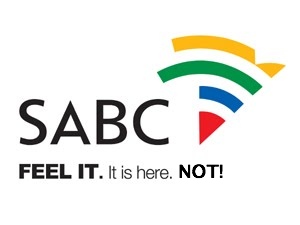
As I sat in front of the box a few minutes ago to enjoy the Battle of Freetown — a crucial 2012 Afcon qualifier between Sierra Leone and South Africa — national broadcaster SABC told us that it was not showing the match. According to news reports, ‘It had emerged on Friday that the SABC had not yet made plans to ensure the game in Freetown would be televised’. 49 million Bafana fans are enraged. Betrayed by a public broadcaster that legally forces South Africans to pay annual fees for pathetic programming and a multibillion rand debt.
Update: SAFA CEO Leslie Sedibe revealed that “For the Sierra Leone away fixture we offered SABC space in the chartered flight and we were unfortunately informed that their crew’s visas were not ready by the time the team departed for Freetown on Friday morning.” Read the story here.
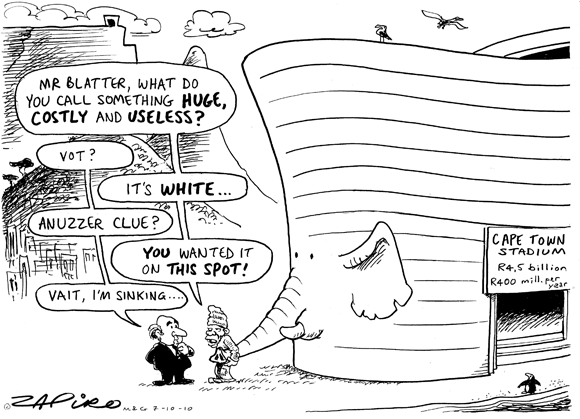
The stadium operator SAIL STADEFRANCE announced yesterday that it is pulling out of the 30-year lease agreement with the City of Cape Town to manage the 4.5 billion rand ($600 million) World Cup stadium at Green Point.
SAIL chairman Morne du Plessis explained that “Shareholders were not prepared to enter the lease under circumstances that projected substantial losses.” Since PSL matches in Cape Town rarely draw more than a few thousand spectators, and rugby already has an excellent stadium at Newlands, local taxpayers must now shoulder the World Cup debt burden long into the future.
For further reading, see my academic journal articles from 2007 and 2008 (free download), in which I argued that in the long run the monumental Cape Town Stadium — built at FIFA’s insistence — would not benefit South African football, but instead would privatize profits (construction companies anyone?) and socialize debt.
Football in the Okavango Delta
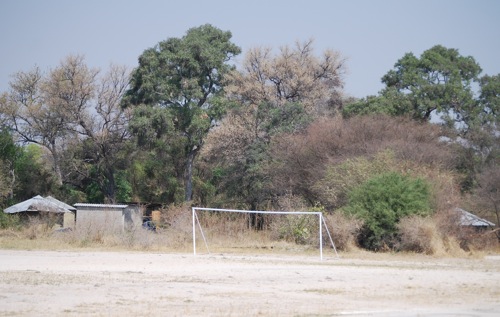
Even in the world’s largest inland delta — the Okavango delta in Botswana — people play the beautiful game. It was Independence Day (30 September) when I took this photo of the pitch at the relatively inaccessible Khwai village. Wearing their new Drogba and Essien jerseys, my daughters unsuccessfully tried to convince a hippo grazing on the riverbank outside the village to take up position between the goalposts. Maybe he was an Arsenal supporter.
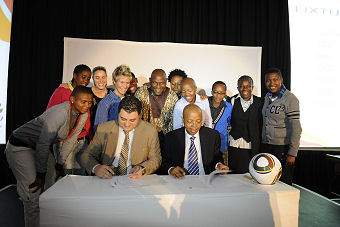
The draw for the 2010 African Women’s Championship was held yesterday at the Birchwood Hotel in Ekurhuleni, east of Johannesburg. The official schedule released by CAF and SAFA reveals that matches will take place at Daveyton’s Sinaba Stadium and Tembisa’s Makhulong Stadium from 31 October to 14 November 2010. However, it remains unclear where each match is taking place and what the kickoff times are.
South African media covered the draw in perfunctory fashion. Local officials repeated platitudes heard daily during the 2010 World Cup: the tournament will market Brand South Africa, foster unity and pride, and so on. ‘This is yet another opportunity to put South Africa and Africa on the global map,’ said Ekhuruleni councillor Ndosi Shongwe in a typical remark. ‘We will be calling all our people to rally behind Banyana Banyana in the same way we did for Bafana Bafana during the 2010 FIFA World Cup. Bafana united us as a nation, now let’s allow the Women’s National Team to take over the baton. To us this is more than just winning the trophy; it is about uniting the country towards social cohesion,’ Shongwe added.
The bigger and more important question, however, is: what will be the impact of this tournament on the development and growth of South African (and African) women’s football at junior, amateur, and elite levels?
This is a crucial question given that the number of female players — mostly black — continues to grow alongside their ongoing marginalization and exclusion in a male-dominated football world. (Suggested reading: Prishani Naidoo and Zanele Muhoi, ‘Women’s bodies and the world of football in South Africa,’ in Ashwin Desai’s The Race to Transform: Sport in Post-Apartheid South Africa (free download here)
What’s in a shoe?
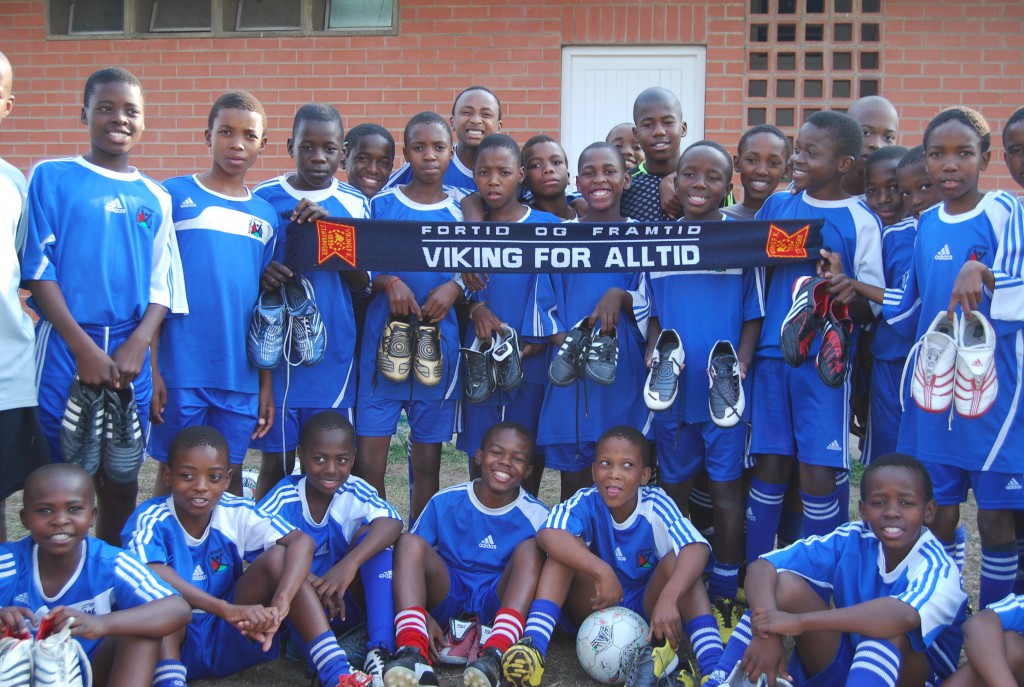
From black high-cut steel-toe boots with leather studs to light, laceless pink boots with titanium studs, the history of football shoes is a journey from pain to pleasure.
Outside Europe and North America, however, millions of young players from working poor families cannot experience that special feeling of slipping on a fine pair of ‘real’ football boots. That is why this week’s generous gift of high quality boots from Viking Stavanger FC in Norway brought such joy to the boys of the Izichwe Youth Football program in Pietermaritzburg, KwaZulu-Natal.
Izichwe has also been invited to Norway for a major international tournament in May 2011. The solidarity of Viking (est. 1899) is doing a lot to open up opportunities for this terrific group of young South Africans.